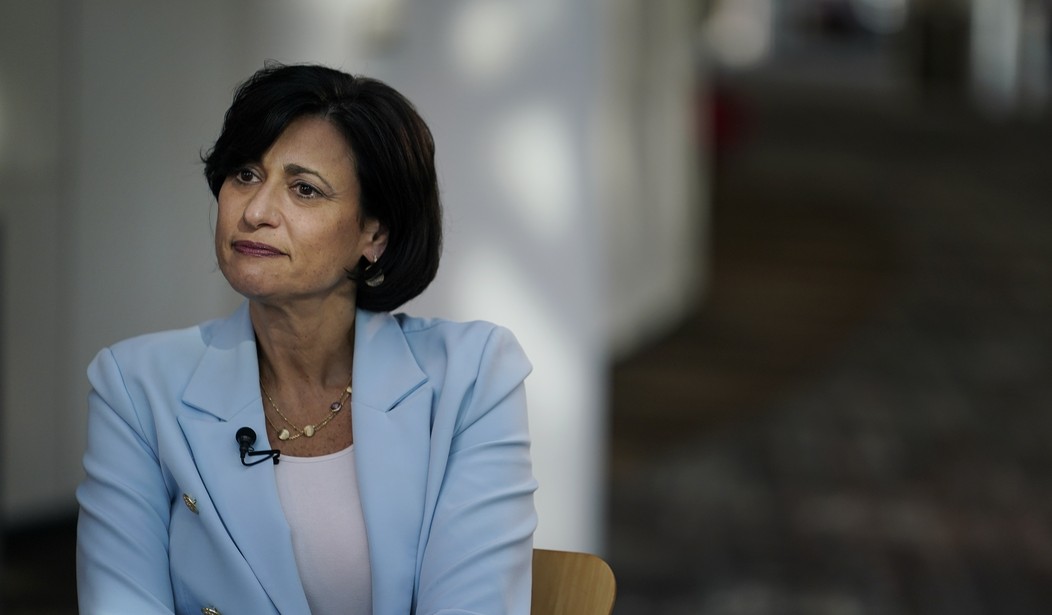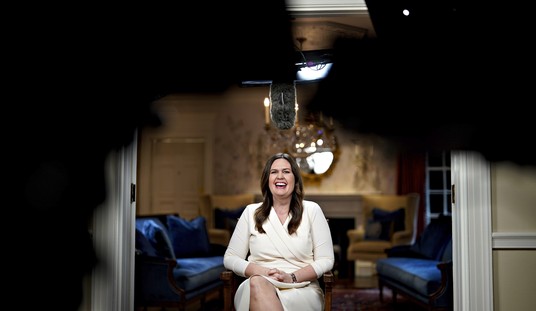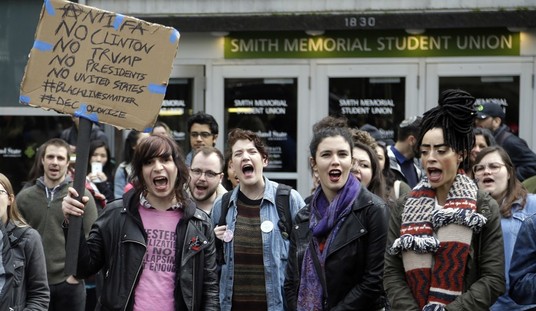In a sane, well-governed country, it’d be a top bipartisan priority post-pandemic to either reorganize this agency or replace it with something actually capable of issuing useful public health guidance. The fact that it’s failed for two years running, once under a Republican administration and then again under a Democratic administration, is evidence that the flaws here are institutional and not political.
But there won’t be any reform. We’ll do what we usually do after a big government failure, organize a commission that’ll recommend some changes that may or may not be adopted. Then we’ll forget about it, indulging instead in idle hope that the agency has learned something from its miserable pandemic performance and will do better next time.
To refresh your memory, the CDC issued guidance before New Year’s shortening the recommended quarantine time during the Omicron wave from 10 days to five in many cases, with no requirement that the infected test negative before venturing out on day six. Scientists howled. Why would the CDC encourage people to be around others, even with the caveat that they should mask up, without asking people to test and make sure that they’re no longer contagious? Various excuses were given by Rochelle Walensky and Anthony Fauci, e.g., most aren’t contagious by day six and rapid tests aren’t perfectly accurate.
But they’re pretty accurate. And many are still contagious on day six:
I took rapid tests through my mild Covid infection two weeks ago. Two takeaways: (1) I was positive for 9+ days. (2) rapid tests show gradation which can have some value for monitoring nasal viral load / presumptive infectiousness. #safertogetherSF @michaelmina_lab @EricTopol pic.twitter.com/0KFVsDZ8Tz
— Saul Kato (@neurotheory) January 3, 2022
The obvious truth was that the CDC didn’t want to require a negative test as a condition for leaving quarantine because there aren’t enough to go around. Their boss, Joe Biden, sh*t the bed by not ramping up the supply of tests in anticipation of a winter wave. Now Americans are stuck, forced to seek lab PCR tests to confirm they’re positive instead of using rapid tests. PCR tests don’t tell you if you’re still contagious to others, though, only that there are some viral particles (which may be dead or too few in number to infect someone else) in your nasal passage. It’s the rapid test that’ll tell you if you’re a threat to infect those around you. But we don’t have enough of those to go around and Fauci and Walensky are unwilling to admit that that’s what’s driving their policy. They simply don’t want to acknowledge Biden’s failure.
Still, they felt obliged to respond to the scientific pushback insisting that a negative test is important before leaving quarantine. So they came up with this new guidance, issued last night:
You can end isolation after 5 full days if you are fever-free for 24 hours without the use of fever-reducing medication and your other symptoms have improved (Loss of taste and smell may persist for weeks or months after recovery and need not delay the end of isolation)…
If an individual has access to a test and wants to test, the best approach is to use an antigen test towards the end of the 5-day isolation period. Collect the test sample only if you are fever-free for 24 hours without the use of fever-reducing medication and your other symptoms have improved (loss of taste and smell may persist for weeks or months after recovery and need not delay the end of isolation). If your test result is positive, you should continue to isolate until day 10. If your test result is negative, you can end isolation, but continue to wear a well-fitting mask around others at home and in public until day 10.
Still no testing requirement. Just a “do it if you wanna” exhortation, with a hint per the reference to “access” that most Americans might not be able to find a test right now. Scientists are baffled:
“The newly updated @CDCgov isolation guidance adds to the confusional state,” tweeted Eric Topol, executive vice president of Scripps Research.
“I’m struggling to make heads or tails of it,” Megan Ranney, academic dean at the Brown University School of Public Health, told Axios.
“It’s basically like ‘get out of jail free at five days unless you happen to run into a rapid test in which case ….’ It feels like a Rube Goldbergian contraption designed to confuse us all.”
The CDC even goes on to note that “Negative results do not rule out SARS-CoV-2 infection,” which is apt to lead people wonder what the point of testing is.
Why, if I didn’t know better, I’d think the agency might be deliberately trying to discourage people from testing themselves.
Is that what’s going on here? Ranney’s point about a “get out of jail free” card was echoed by Dr. Leana Wen on CNN. If you’re not required to get tested to leave quarantine under the guidance and if testing positive on day six means you should isolate for another five days, won’t people conclude that they shouldn’t test themselves? If they’re free to re-enter society so long as they don’t know if they’re still contagious then there’s an incentive to remain ignorant.
CNN medical analyst @DrLeanaWen says CDC clarification recommending 5 more days of isolation if patients test positive (though test still not required) “made things worse.”
“I think they should be up front and say they can’t do this because we just don’t have enough tests …” pic.twitter.com/uFNilLVN2i
— The Recount (@therecount) January 5, 2022
Convincing people that it’s not in their own interest to get tested is one way to cope with a shortage of tests. Not a responsible way, but a way.
Scott Gottlieb is also mystified by what the CDC thinks it’s accomplishing here:
"When you're a public health agency you need to speak with purpose … you can't capture the public attention for a very long duration," says @ScottGottliebMD "CDC repeatedly has spoken just to seemingly occupy the space and not really have an intended public health outcome." pic.twitter.com/COpWBU6b18
— Squawk Box (@SquawkCNBC) January 5, 2022
The obvious truth which none of the feds will acknowledge is that the guidance is being shaped by the reality that tests are scarce. Infected people would certainly be asked to test negative before leaving their homes if that were feasible. But with demand for tests skyrocketing as Omicron blazes through the population and the supply short, there’s no way everyone who’s home sick with COVID can get their hands on one at the moment. And if employers force everyone who’s infected to quarantine for 10 days, entire industries will be brought to their knees by the lack of manpower on the job. So the CDC cut the quarantine time to five and jettisoned the testing requirement, not for any scientific reason but for purely pragmatic ones. During a wave driven by a mild hyper-contagious variant, the bigger threat to the country is the economic harm that will be done if workplaces are depopulated.
It’s no different from Fauci’s “noble lie” early in the pandemic about masks, notes Zeynep Tufekci. That was also based not on science but on practical considerations, preserving the limited supply of PPE for doctors and nurses. The noble lie this time is being told by Rochelle Walensky, who sang a different tune about rapid tests in 2020 as a private citizen:
Walensky, who was then on the faculty of the Harvard Medical School and chief of the division of infectious diseases at Massachusetts General Hospital, was a co-author of a paper in September 2020 that declared that the “P.C.R.-based nasal swab your caregiver uses in the hospital does a great job determining if you are infected but it does a rotten job of zooming in on whether you are infectious.”
That’s right, the key question is who is infectious, who can pass on the virus, not whether someone is still harboring some small amount of virus, or even fragments of it. P.C.R. tests can detect such tiny amounts of the virus that they can “return positives for as many as 6-12 weeks,” she pointed out. That’s “long after a person has ceased to pose any real risk of transmission to others.” P.C.R. tests are a bit like being able to find a thief’s fingerprints after he’s left the house.
So what did 2020 Walensky recommend? “The antigen test is ideally suited to yield positive results precisely when the infected individual is maximally infectious,” she and her co-author concluded.
Walensky even dismissed concerns at the time — which she now spouts as head of the CDC — that rapid tests produce too many false negatives. Those negatives aren’t “false” in the important sense of whether someone is still contagious, she argued in 2020. They’re “false” in the sense that an infected person might still have some virus in their nose and test positive on a PCR, but the reason we use rapid tests is to detect whether someone is infectious to others. And the rapid tests do a fine job of that. Fast-forward two years and she’s now downplaying the utility of rapid tests because it benefits her boss, Joe Biden, to do so. Which makes me wonder if the opening of this post is wrong — maybe the CDC’s problems are fundamentally political after all.








Join the conversation as a VIP Member